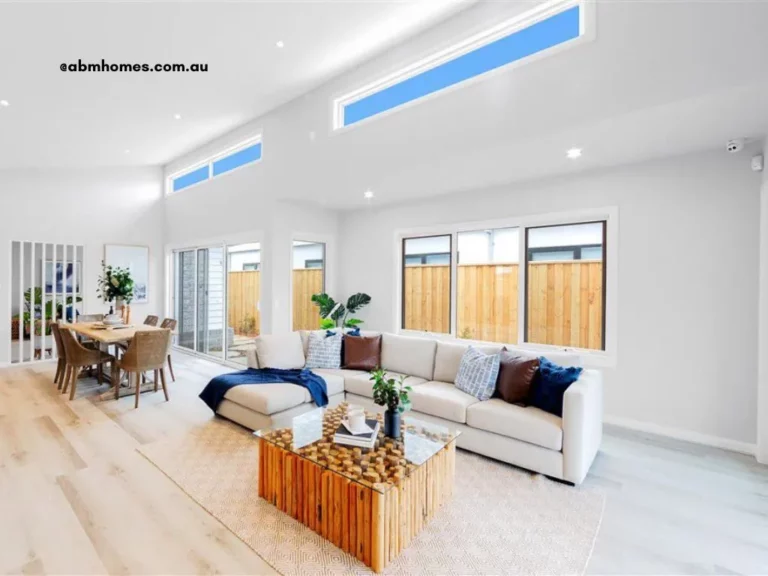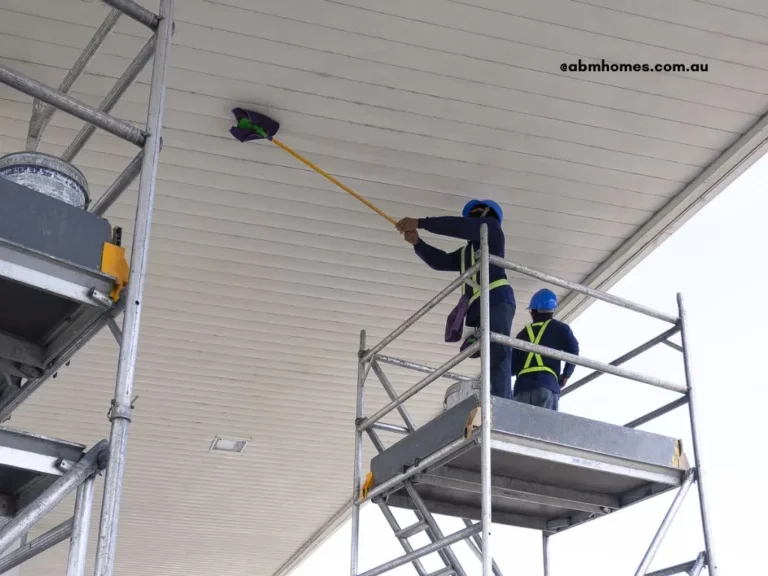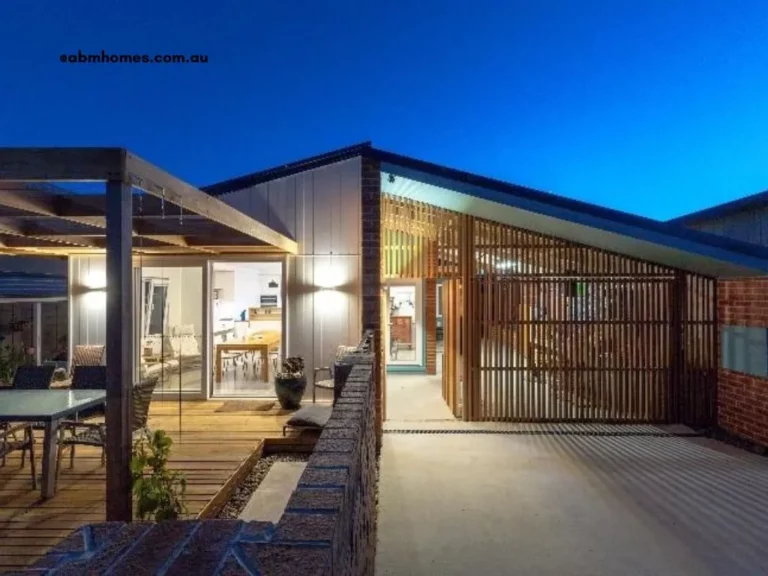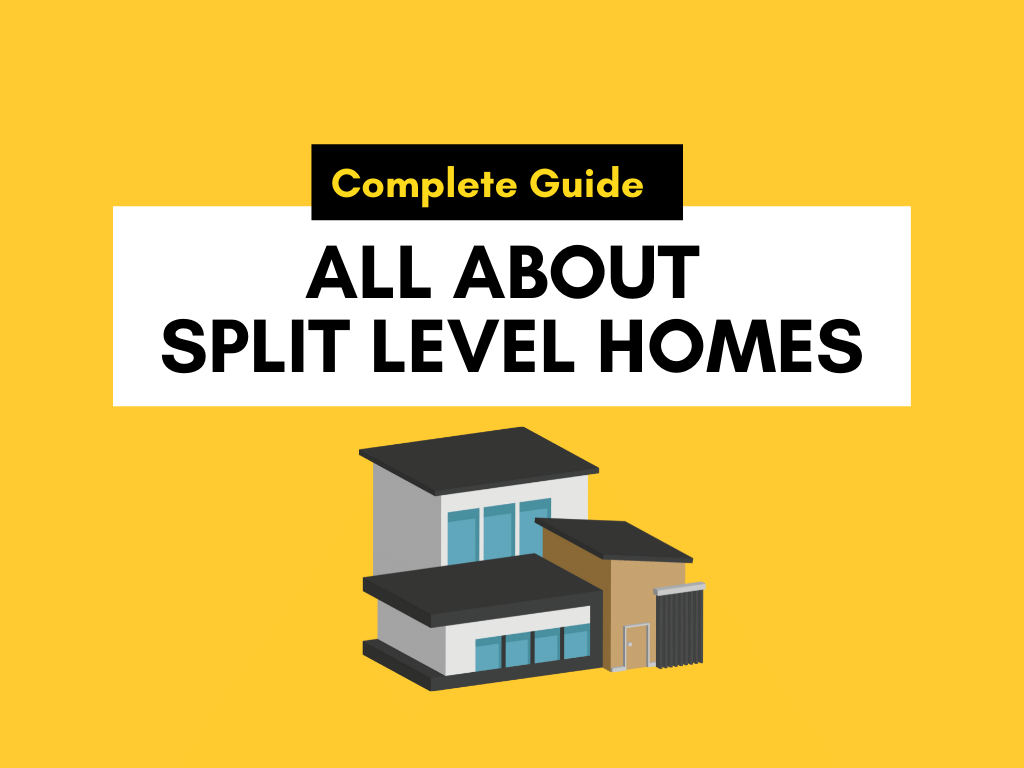Standard Ceiling Height
Table of Contents
High ceilings add a spectacular aspect to any home. Most of our clients’ at ABM Homes request a higher ceiling, for new builds as well as rebuilds.
As this is a topic close to most homeowner’s hearts, we’ve tried to cover the most important aspects in this definitive guide.
Types of High Ceilings


1. Plain Ceiling:
This is the most common type, used traditionally. They look and feel classic and elegant, although they’re not the flashiest option.
2. Raked Ceiling:
They’re like a skillion roof, with two beautifully angled sections. While not the most common choice, they add a layer of character, which is especially perfect for homes with open floor plans.
3. Double-storey void:
These are a bit more situational, covering the height of two floors. They can make a real statement in an entryway, living area, or even an event hall.
How high should a Ceiling be?


Australian federal laws have strict Standard Ceiling Height Guidelines to ensure optimal living standards.
These guidelines have divided rooms into two categories, as well as some exemptions:
1. Habitable rooms:
As per the National Construction Code, essential living spaces such as bedrooms, living rooms, dining areas, and family rooms are considered habitable rooms. They have a minimum height requirement of 2.4 meters.
2. Non-habitable rooms:
This classification covers areas where we spend less of our time, like bathrooms, toilets, laundry areas, and hallways. They are supposed to have a minimum height of 2.1 meters.
3. Attics and stairways:
They get a bit of leeway when it comes to height, as long as at least two-thirds of the floor space is above 2.2 meters. Stairways can be a touch lower, but they’ve got to clear the 2-meter mark. These conditions are based on safety concerns, particularly for taller individuals, as they help prevent potential head or hand injuries.
Reasons to get High Ceilings:


Let’s check out other reasons everyone loves high ceilings:
1. Aesthetics :
Imagine stepping into a room and feeling it open up, bathed in natural light. High ceilings have a way of making windows look even bigger and brighter. And if you’re lucky enough to live in a green area like Whitlam, consider adding those special highlight windows for a touch of nature indoors.
2. Open Space:
High ceilings will make sure your home doesn’t feel claustrophobic, especially for tall people. With extra natural light, it’s a game-changer for smaller homes, making them look and feel so much more spacious.
3. Heat management :
Higher ceilings facilitate better cooling, as they allow heat to naturally rise. This is especially advantageous in Australia’s warmer climate.
4. Tactile ambiance:
Different rooms deserve their unique vibe, right? That’s where adjusting the ceiling height comes in. Whether you’re going for a cozy, intimate feel or aiming for a breezy, airy atmosphere, it’s all about tailoring the space to suit your needs.
5. Resale value:
As they are very popular, high ceilings ensure you get the maximum return on investment. When considering a property purchase, make sure the ceiling height meets the standards. Otherwise, you’ll have to spend costly adjustments or even a complete rebuild, with vaulted ceilings—an aspect best discussed with a qualified and experienced homebuilder.
Issues with high ceilings


Now, let’s talk about the common challenges that come with those lofty ceilings:
1. Maintenance:
It’s no secret that higher ceilings can be a bit more of a challenge to keep squeaky clean. Getting those hard-to-reach spots might require a bit of extra effort.
2. Air circulation:
While tall ceilings do create more room for warm air to rise, it also means that air circulation takes a tad longer. So, it might take a bit more time and energy to get your space to the perfect temperature, which can add to your energy bill.
3. Noise:
With more room to travel, voices tend to echo a bit more. But fear not! You can easily tame this with some well-placed furnishings and fabrics. Rugs, carpets, and cushions can work wonders in soaking up and softening those sounds.
4. Cost:
If you’ve purchased a pre-built house, and you’re thinking about raising the ceiling, it’s worth noting that this might come with an added expense.
High Ceilings in Canberra and NSW




Karandeep Singh
Karandeep Singh is the Operations Manager at ABM Homes with diplomas in Project Management and Building and Construction. Off-duty, he's smashing ping pong balls or hitting cricket sixes. A construction geek, he loves untangling concepts for others.


Karandeep Singh is the Operations Manager at ABM Homes with diplomas in Project Management and Building and Construction. Off-duty, he’s smashing ping pong balls or hitting cricket sixes. A construction geek, he loves untangling concepts for others.






